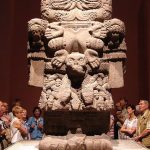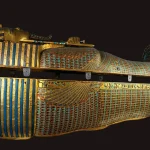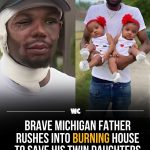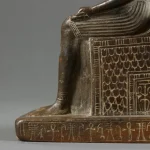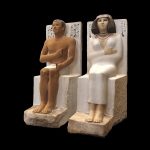Mask of a Woman
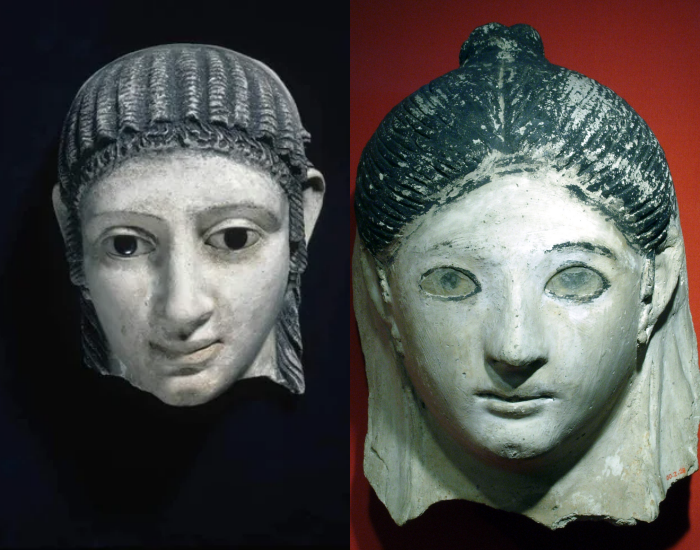
First century AD
Unknown origin
Painted plaster and glass
Height: 24.5 cm; Width: 18 cm
The Louvre Museum, Paris
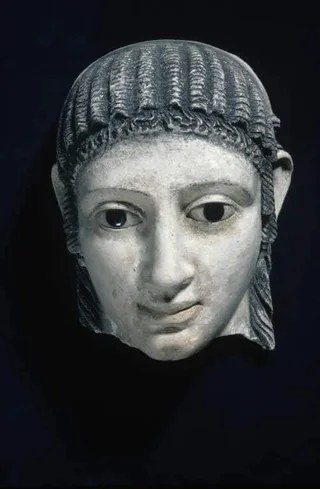
This mask, depicting the face of a Greek woman, was placed over the face of a 𝘮𝘶𝘮𝘮𝘺.
Originally polychromatic, this mask was cast in plaster and hollow on the inside. During the Roman period, this type of mask replaced the traditional pharaonic mask, serving the same purpose as mummy portraits painted on wood.
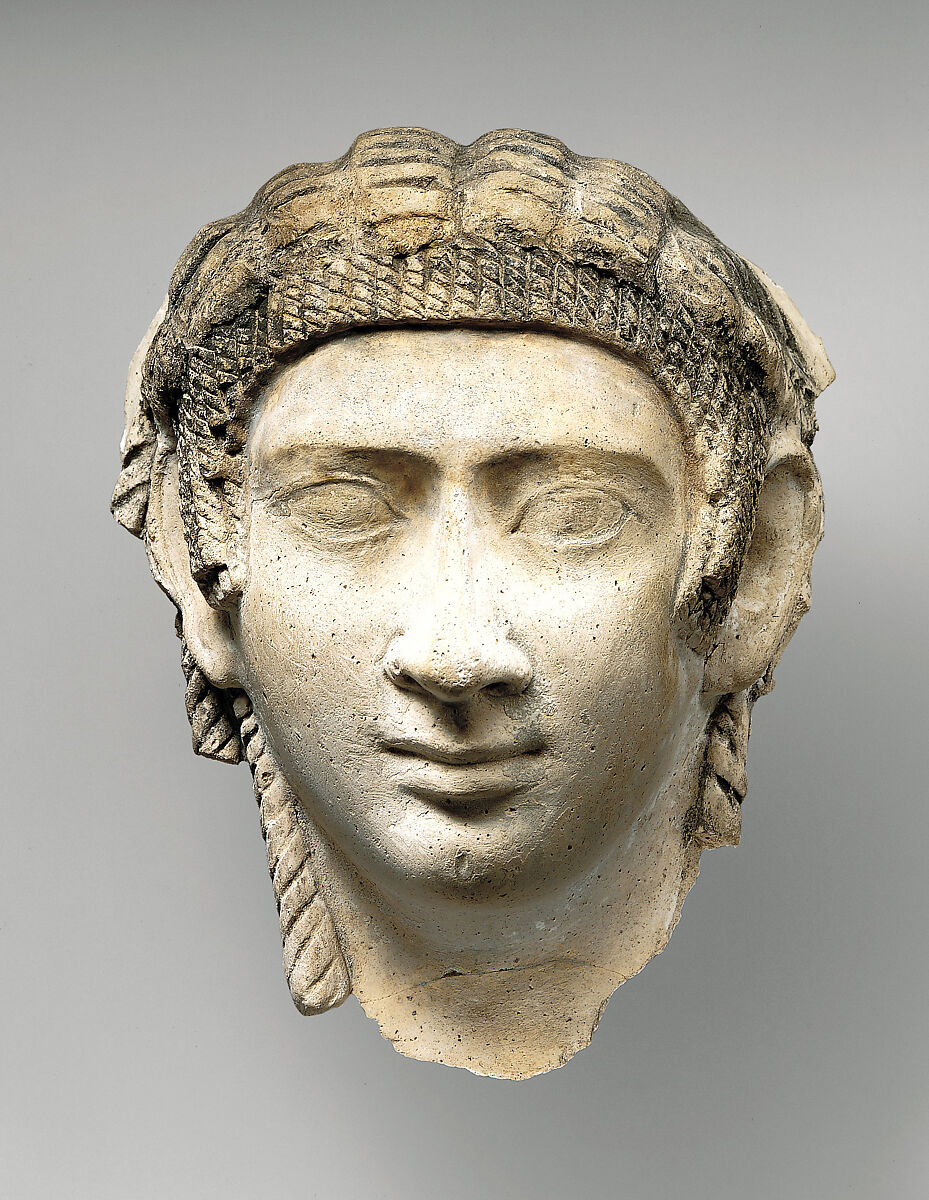
A Greek Face
The mask is broken just below the chin, yet the face—including both ears and part of the head—remains intact. Most of the paint on the skin is lost, with only faint traces of red at the corners of the lips. The black of the hair, however, is well preserved.

The facial features are typically Greek: a perfect oval, a straight nose, barely smiling lips, a dimpled round chin, and elegantly curved eyebrow ridges—all echoing Hellenistic sculpture. The eyes are inlaid with black and white glass. The ears are exposed and positioned high on the head, adorned with ring-shaped earrings featuring three pearls.

The hair falls in parallel waves, forming a skullcap-like shape that ends at the forehead in a strip of short, curly locks. A single ringlet remains behind each ear, with traces of three others above the left ear. Two braided loops, one shorter than the other, hang in front of the ears.
A “Mass-Produced” Mask
These plaster funerary masks were made in series. Successive layers of plaster, of roughly equal thickness, were poured into a cast. The different sections—face, hair, and ears—were created separately and assembled after removal from the mold. Both face and hair are hollow, and marks from the craftsmen’s fingers are often still visible inside.
The mask was then painted: skin in light or dark pink, lips and nostril hollows in red, and hair and eyebrows in black. Occasionally, the face was covered with gold leaf. Special attention was given to the eyes to achieve a lifelike appearance; they could be carved and painted, covered with a thin strip of painted glass, or inlaid with stone or glass, as in this example.
Clues to Dating
As with painted mummy portraits, hair, beard, and jewelry personalized these otherwise “mass-produced” masks. These features are also important for dating, reflecting contemporary fashions. The classical facial features, hairstyle, and Hellenistic earrings of this woman’s mask suggest an early date.
